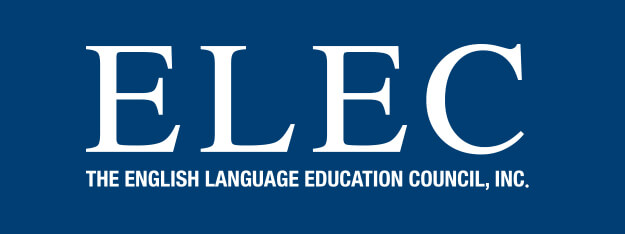
褒めることで育てるモチベーション
本記事では、Tony先生が「褒めること」の教育的な効果について考察し、学習者の自信や英語での発話意欲(WTC)を高めるための具体的な声かけやフィードバックの方法を紹介しています。
日々の授業に取り入れやすい実践例も交えながら、学習者のやる気を引き出す関わり方をわかりやすく解説した内容です。ぜひご一読下さい。
Motivation through Praise
As teachers, we know learner motivation along with engagement not only creates an ideal environment for learning and achievement, but also a more rewarding environment for teachers. This article will investigate how we can use praise to help motivate our learners.
As noted by Brophy (1981)*1, offering praise means recognizing the value of something and expressing appreciation or approval. It is generally given when a learner completes a task or performs well. Statements such as “Great job, Hiro” or “Nice work, Yuna,” are examples of general praise. They recognize a learner’s behaviour without mentioning specifics. Non-verbal actions such as head nods and thumbs up are also examples of general praise.
In contrast, behavioural specific praise, also known as positive feedback, serves as a form of positive recognition that highlights a learner’s strengths of skills and learning progress. Unlike general praise, behaviour specific praise is more detailed and targeted. For example, saying “You have written a clear sentence, Hiro, you are improving” or “Yuna, that is perfect use of your new word, you are trying hard” identifies areas of accomplishment in the learner’s performance as well as their efforts. Both general praise and behaviour specific praise can influence motivation.
One way we can assess a learner’ motivation is by looking at MacIntyre et al’s (1998)*2 willingness to communicate (WTC). WTC refers to a learner’s readiness to engage in communication when given the opportunity. It is affected by factors including confidence, language proficiency, the classroom environment and past experiences. A high WTC means learners are more likely to engage in tasks and activities using English.
To motive learners to communicate more or increase their WTC we can create a more encouraging environment. Giving praise can raise confidence, lower anxiety, and make learners more willing to communicate in class. When we focus on a learner’s efforts, for example, “Haruki, I see you are trying hard to explain”, they are more likely to keep going. Highlighting specific skills, like “Aya, those transition words really improved your explanation”, help the learner see what they’re doing well. Similarly, praising a learner for trying new things, can make them less afraid of making mistakes. And having learners praise each other creates a more positive atmosphere in the classroom.
In summary, WTC reflects a learner’s readiness to engage in communication and is influenced by confidence, proficiency, classroom environment, and past experiences. Teachers can increase WTC by creating a supportive atmosphere through praise, which improves confidence, reduces anxiety, and encourages participation. See Appendices 1 & 2
Praise is a powerful tool for motivating learners and promoting a positive learning environment. By using both general and behaviour-specific praise, teachers can enhance learners’ confidence, encourage effort, and support key skills. When learners feel recognized and supported, they are more likely to engage in communication, take risks, and persist in their language learning. Finally, effective praise not only enhances motivation but also creates a more active and encouraging classroom where learners feel motivated to engage.
References:
*1 Brophy, J. (1981). Teacher praise: A functional analysis. Review of Educational Research.
*2 MacIntyre, P. D., Clément, R., Dörnyei, Z., & Noels, K. A. (1998). Conceptualizing willingness to communicate in a second language: A situational model of L2 confidence and affiliation. The Modern Language Journal.
褒めることで育てるモチベーション
教師として私たちは、学習者のやる気を引き出すことが学習と達成に最適な環境を生み出すだけでなく、教師自身にとってもやりがいのある環境を作り出すことを知っています。
この記事では、学習者のやる気を引き出すために、「褒めること」をどのように活用できるかを探ります。
Brophy (1981)*1によれば、褒めることは、何かの価値を認め、それに対して感謝や承認を表すことを意味します。一般的に、学習者が課題を終えたり、よい成果を上げたりしたときに用いられます。「ヒロ、よく頑張ったね」や「よくやったね、ユナ」といった発言は、一般的な褒め方です。具体的な点に触れることなく、学習者の行動を認めています。うなずきや親指を立てるジェスチャーといった非言語的な行動も、一般的な褒め方の一例です。
一方で、具体的な行動をほめる褒め方は、ポジティブ・フィードバックとも呼ばれ、学習者のスキルや学習の進捗状況といった強みを積極的に評価するものです。一般的な褒め方とは異なり、より具体的かつ的を絞って褒めます。たとえば、「ヒロ、はっきりとした文が書けたね。上達しているよ」や「ユナ、新しい単語を完璧に使えているね。すごく努力しているね」といった言葉は、学習者の成果と努力の両方を明確に認めています。一般的な褒め方も具体的な行動を認める褒め方も、どちらも学習者のモチベーションに影響を与えることができます。
学習者のモチベーションを評価する一つの方法として、MacIntyre et al’s (1998)*2が提唱した「コミュニケーションへの意思(WTC: Willingness to Communicate)」を活用することができます。WTCとは、学習者が機会を与えられたときに進んでコミュニケーションに参加しようとする態度や意欲を指します。この意欲は、自信、言語能力、教室環境、過去の経験といった要因によって左右されます。WTCが高い学習者は、英語を使った課題や活動により積極的に取り組む傾向があります。
学習者のコミュニケーション意欲を高めたり、WTCを向上させたりするためには、より励まし合える環境を作ることが効果的です。褒めることで、学習者の自信が育ち、不安が和らぎ、授業内で積極的に話そうという気持ちが生まれやすくなります。たとえば、「ハルキ、一生懸命説明しようとしているね」のように努力に注目すると、学習者はよりそのまま頑張り続けようという気持ちになります。また、「アヤ、つなぎ言葉を使うことで説明がとても分かりやすくなったよ」といったように具体的なスキルに触れることで、何がうまくできているかを本人が理解しやすくなります。
同様に、新しいことに挑戦したことを褒めることで、間違いを恐れずにチャレンジしようという姿勢が育まれます。そして、学習者同士が褒め合うことで、教室がよりポジティブな雰囲気になるのです。
まとめると、WTCは、学習者がコミュニケーションに積極的に参加しようとする意欲や心構えを反映したものであり、自信や習熟度、教室の雰囲気、過去の経験などの影響を受けます。教師は褒めることを通じて、学習者の自信を高め、不安を軽減し、参加を促すことで、WTCを高めることができます。 添付資料1・2参照
褒めることは、学習者のやる気を引き出し、前向きな学習環境を促進するための強力な手段です。一般的な褒め方と具体的な行動に応じた褒め方の両方を活用することで、教師は学習者の自信を高め、努力を促し、重要なスキルの習得をサポートすることができます。学習者が認められ、サポートされていると感じれば、コミュニケーションに積極的に参加し、失敗を恐れず、言語学習を粘り強く続けるようになります。最終的に、効果的な褒め言葉は、学習者のやる気を高めるだけでなく、積極的に関わりたくなるような、活気に満ちた励まし合いのある教室をつくり出すことにもつながるのです。
参考文献:
*1 Brophy, J. (1981). Teacher praise: A functional analysis. Review of Educational Research.
*2 MacIntyre, P. D., Clément, R., Dörnyei, Z., & Noels, K. A. (1998). Conceptualizing willingness to communicate in a second language: A situational model of L2 confidence and affiliation. The Modern Language Journal.
